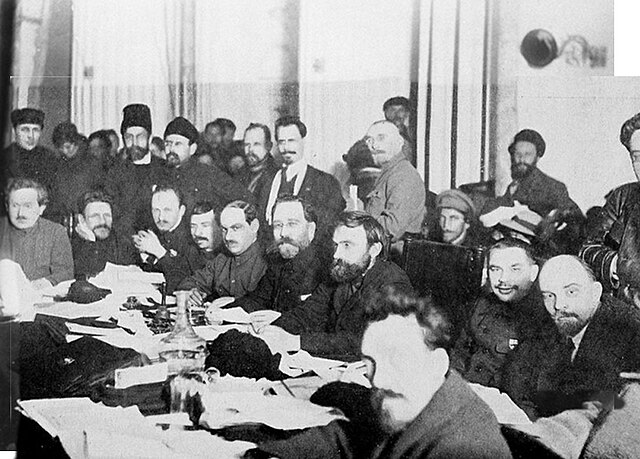The Russian Civil War (1917-1923) was a complex and tumultuous conflict that unfolded in the wake of the Russian Revolution of 1917. It involved a multitude of factions, both domestic and foreign, and resulted in the establishment of the Soviet Union. Here are key players and events in the Russian Civil War:
Key Players:
- Bolsheviks (Reds): Led by Vladimir Lenin and the Bolshevik Party, the Reds were the revolutionary communists who sought to establish a socialist state in Russia. They controlled Moscow and Petrograd (St. Petersburg) and later formed the Russian Soviet Federative Socialist Republic.
- Anti-Bolshevik Forces (Whites): The White Army was a loose coalition of anti-Bolshevik factions that opposed the Bolshevik regime. These factions included monarchists, conservatives, liberals, and foreign interventionist forces. Key White leaders included Admiral Alexander Kolchak, General Anton Denikin, and General Pyotr Wrangel.

- Green Armies: The Greens were various regional, anti-Bolshevik forces that often formed spontaneously in response to Bolshevik policies and actions. They were decentralized and included peasant uprisings, nationalists, and other groups.
- Foreign Interventionist Forces: Several Western powers, including Britain, France, the United States, and Japan, intervened in the Russian Civil War on the side of the Whites. Their motives varied, but they generally opposed the spread of communism and sought to protect their interests in Russia.
Key Events:
- October Revolution (1917): The Bolsheviks, led by Vladimir Lenin, seized power in Petrograd (St. Petersburg) and overthrew the Provisional Government. This marked the beginning of the Russian Civil War.
- Treaty of Brest-Litovsk (1918): The Bolshevik government signed a peace treaty with Germany, effectively ending Russia’s participation in World War I but ceding significant territory to the Central Powers.
- Formation of the White Armies: Anti-Bolshevik factions across Russia began organizing White Armies to challenge Bolshevik rule. These armies were often disorganized and lacked a unified command.
- Allied Intervention (1918-1920): Western powers, along with Japan, deployed troops to various parts of Russia to support the White Armies. The extent of their involvement varied, but they generally aimed to counter Bolshevik expansion.
- Red Army and War Communism: The Bolsheviks formed the Red Army, led by Leon Trotsky, which became a powerful and disciplined fighting force. The Red Army implemented “War Communism” policies, which included requisitioning grain from peasants and centralizing control of the economy.
- Southern Front and Denikin’s Advance (1919-1920): General Anton Denikin led the White forces in the southern part of Russia and launched a significant offensive against the Reds. However, he was eventually pushed back by Red Army counterattacks.
- Kolchak’s Regime and Fall (1918-1920): Admiral Alexander Kolchak briefly established a White government in Siberia, but it collapsed in 1920 under pressure from both the Reds and local forces.
- Wrangel’s Last Stand (1920-1921): General Pyotr Wrangel led the final significant White Army in the Crimea. He held out against the Red Army until 1921 when he and his forces evacuated to Turkey.
- End of the Civil War (1923): While fighting continued in some regions, the Russian Civil War is generally considered to have ended in 1923. The Bolsheviks emerged victorious, and the Soviet Union was formally established in 1922.
- War’s Impact: The Russian Civil War resulted in immense suffering, including famine, economic collapse, and widespread violence. It also led to the consolidation of Bolshevik power and the establishment of the Soviet Union under communist rule.
The Russian Civil War was a multifaceted conflict that involved numerous factions, foreign intervention, and shifting alliances. It shaped the course of 20th-century Russian and world history, laying the foundation for the Soviet state and the Cold War that followed.











